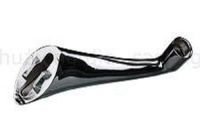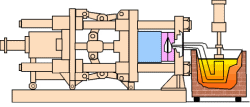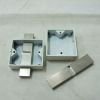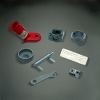Manufacturing Die Cast Parts in Modern Times. Nowadays, a huge percentage of the metalworking industry is going for the die casting process over all other casting methods around. This is understandable, considering the number of advantages that the die casting process offers, including smart part engineering and significantly lower production costs in terms of part and tooling or machining requirements. Thanks to continuous advancements in science and technology, the die casting process now provides better design options that give consumers a wide array of choices, as well as superior performance and quality as seen in the general durability of die cast parts. All of these make for cost-effective manufacturing.
The die casting process is one that involves the forcing of molten metal placed under high pressure into mold cavities, which are later manipulated by machines and called dies. Manufacturing die cast parts is suited most specifically for applications that require a large quantity of parts of all sizes that must have good detail, fine surface quality, exceptional finish, and consistent dimensional precision. Many manufacturers prefer the die casting process over other casting process out there because of these excellent features that technology has improved over the years.
Manufacturing die cast parts in modern times makes use of nonferrous metals, which include, above else, aluminum, copper, zinc, lead, magnesium, and tin. But die cast parts can also be made from ferrous metals with the same praiseworthy results. It is because of this unique level of versatility that the die casting process is preferred over the rest of the casting methods, and die cast parts enjoy a reputation of being some of the highest-volume goods in the metalworking industry.
Zinc Die Casting Blog to get die casting information from Die Casting Zinc Company.
Look here to find information about Zinc Die Casting Alloys
Look at this webpage for
zinc die casting prices. Email us at Sales@DieCastingZinc.com





